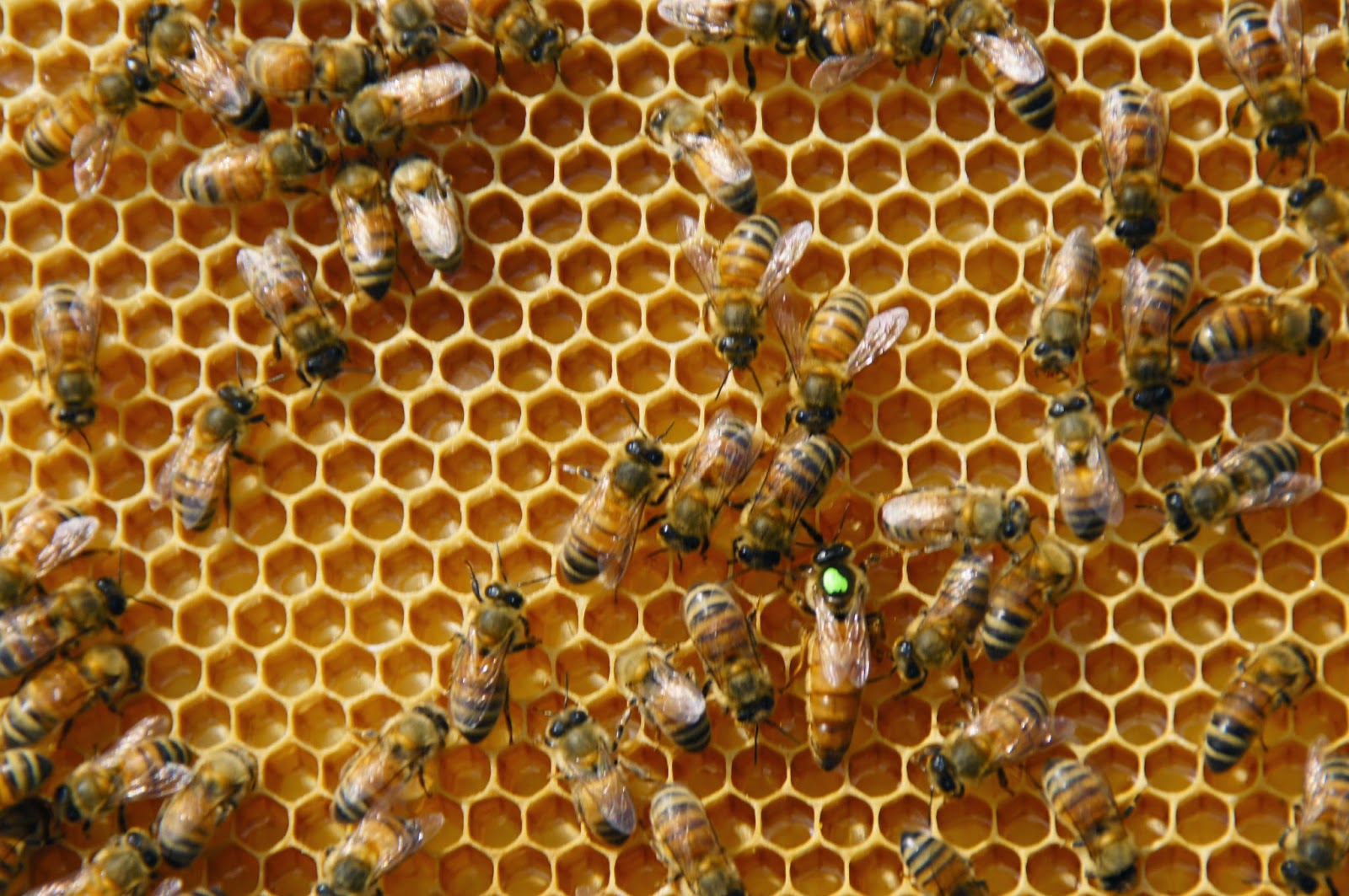- The bees are not aggressive, but will fight back and sting if they or the hive is threatened.
- Bees can travel about 1 1/2 to 2 miles from the hive to find food.
- Bees live for approximately 6 weeks with the queen bee living between 2-3 years.
- Bees collect both honey and pollen. They need both to survive. The honey is their carbohydrate and the pollen is their protein.
- During the warmest part of the day about 2/3 of the colony is at the hive. The rest are out foraging for food.
- During the last two weeks of a bee's life, they are primarily foraging all the time.
- There are different categories of bees such as:
Guard bees who guard the entrance to the hive to keep out unwanted guests.
Queen attendants who make sure the queen is well-fed and groomed.
Drones are the male bees in the colony. They are about 10% of the total colony. Their primary purpose is to procreate. Bee mating occurs outside of the hive in mid-flight about 200 to 300 feet in the air. The drone has extremely large eyes for spotting virgin queens. As soon as they mate the drone dies. Drones are tolerated in a colony only because they may be needed to mate with a new virgin bee to keep the colony alive. When the air temperature lowers the drones are eliminated from the colony so they don't consume any of the stored food in the hive.
Foragers who leave the hive and search for honey and pollen during the last 2 weeks of their 6 week life.
Transporter bees who take honey from the foragers to the upper layers of the hive.
A few minutes ago I got to see all the parts of the hive and now I am prepared to watch as Hal opens the hive. Again, I will give you a visual journey through the process of opening the hive to the inspection of the parts of the super and eventually closing the hive. I found it fascinating and wasn't threatened by the thousands of bees that call Hal's hive home. It was another extraordinary day in the life of an ordinary guy.
 |
| Hal is removing the Top Feeder. It sticks together because of all the wax and "Burr" that is created by the bees. A "hive" tool is needed for this procedure so you don't damage the hive. |
 |
| Opening and exposing the super. There are eight comb frames in place in this super. |
 |
| One of the frames is displayed. Notice that the entire frame resembles a honey comb. In this frame the bees have started to fill the small six-sided openings with honey, brood (eggs) or pollen. |
 |
| The combs that are light yellow capped with a thin layer of waxr are the brood. They will eventually hatch and become a bee. |
 |
| Hal checking one of the comb frames. |
 |
| Here Hal is scrapping some of the "burr comb" from the frame. The bees have added it since there was too much space between the frame and the side or top of the hive. |
 |
| If you look carefully at the bottom of the photo, about one third from the left, you will see the head of a bee pushing through. It is about to be born! |
 |
| Hal is mixing food for the bees. A 1:1 mixture of water and sugar. |
 |
| The mixture is poured into feeding bottles and placed at the entrance to the hive. |








No comments:
Post a Comment